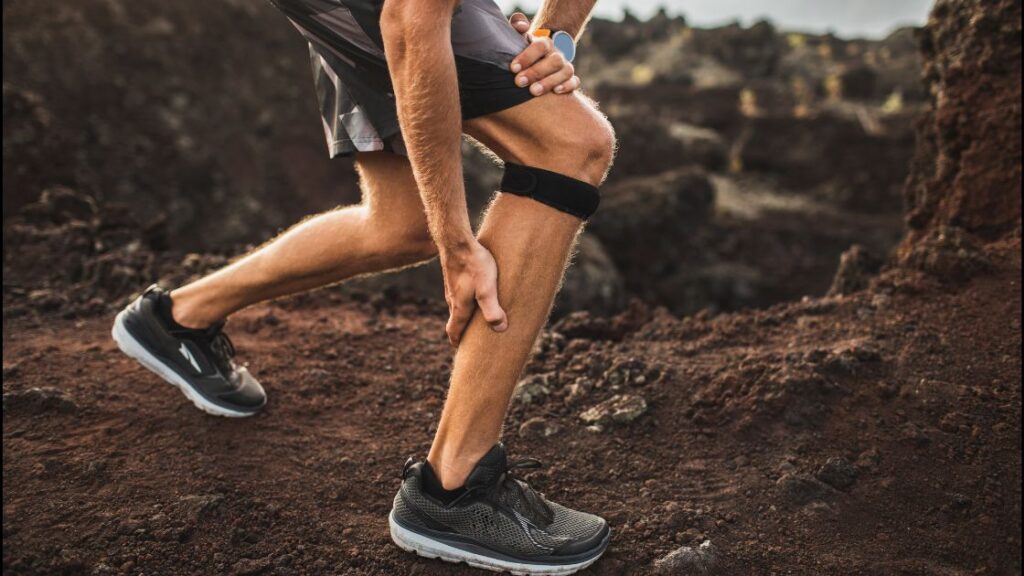Muscle Group of the Week: Calves

The posterior lower leg consists of two main calf muscles known as the gastrocnemius and the soleus.
Superficial to the soleus, the gastrocnemius is a two-headed muscle running from the posterior surface of the calcaneus (heel bone) up into the femoral condyles just above the knee. The soleus, originating from the posterior tibia (shin bone), joins the gastrocnemius at the heel to form the largest and strongest tendon in the body known as the Achilles tendon.
What Do They Do?
The gastrocnemius and soleus, both responsible for the ability to walk, are responsible for moving the lower leg. They both play an important role in standing posture and quick movements such as running and jumping. More specifically though, what are the functions of the main calf muscles?
Gastrocnemius
- Ankle (talocrural) joint: Foot plantar flexion
- Knee joint: Leg flexion
Soleus
- Ankle (talocrural) joint: Foot plantar flexion
Making it Strong
What are the best exercises for building strong calves?
The Best Stretches
What are the most effective stretches for maintaining flexibility and reducing likelihood of injury to the calves?
Keeping It Happy
Tight calf muscles benefit from deep tissue massage, sports massage, heat therapy, ice therapy, or a combination. Bodywork and hot/cold therapy remove adhesions from muscles, promote healthy circulation to undernourished tissues, and improve flexibility once the knots are loosened.
When the gastrocnemius and soleus become short and tight, their antagonist muscles lengthen and weaken. The tibialis anterior, a shin muscle, is overstretched by hyper-contracted calf muscles and requires strengthening. Shin exercises, which can be executed alone or with assistance, apply resistance to the tops of the toes and feet. A therapist can address the tibialis anterior through proprioceptive neuromuscular facilitation by pressing on the top of the feet while the patient extends the toes.
At-home self care is also important for keeping the calves healthy. Foam rollers can be an effective tool when used with proper form, and if you don’t have one you can take a look in your kitchen to see if you have a regular rolling pin in the drawer!
Now You Know!
Take good care of your calves! Your ability to walk, run, jump, and stand depends on them!
Next time we’ll talk about the hamstrings and how to keep them healthy!
Katrina Jenkins
Author, Licensed Massage Therapist
Katrina Jenkins graduated from Towson University in 2013 with a Bachelor’s Degree in Health Science and worked as a nurse’s aide briefly before pursuing her true passion. She graduated from the Massage Therapy Institute of Colorado in April 2016 with honors and completed the Touch of Healers Scholarship Program the following summer. She has been a part of the Moyer Total Wellness Team since the summer of 2017.
Resources
Rebecca Buffum Taylor. “Calf-Strengthening Exercises.” WebMD, WebMD, 29 June 2011, www.webmd.com/fitness-exercise/strengthening-calf-muscles.
Sears, Brett. “Anatomy and Function of the Calf Muscle.” Verywell Health, 8 Mar. 2022, www.verywellhealth.com/gastrocnemius-muscle-anatomy-4684083.
Sears, Brett. “Soleus Muscle: Anatomy, Function, and Treatment.” Verywell Health, 6 Feb. 2022, www.verywellhealth.com/soleus-muscle-anatomy-4684082.
The Healthline Editorial Team. “Foot Muscles Anatomy, Function & Diagram | Body Maps.” Healthline, 22 Jan. 2018, www.healthline.com/human-body-maps/foot-muscles#1.
Photo Credit
Canva by olegbreslavtsev
Canva by Hank Grebe
Canva by Hank Grebe
Canva by zdenkam
Canva by lbrakovic
Canva by DAPA Images
Canva by Studio India
Canva by Thom_Morris
Canva by IT Stock
Canva by wutwhanfoto
Canva by shironosov
Canva by microgen
